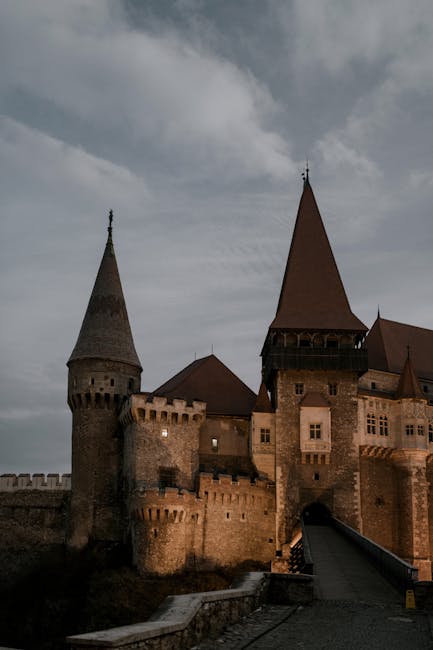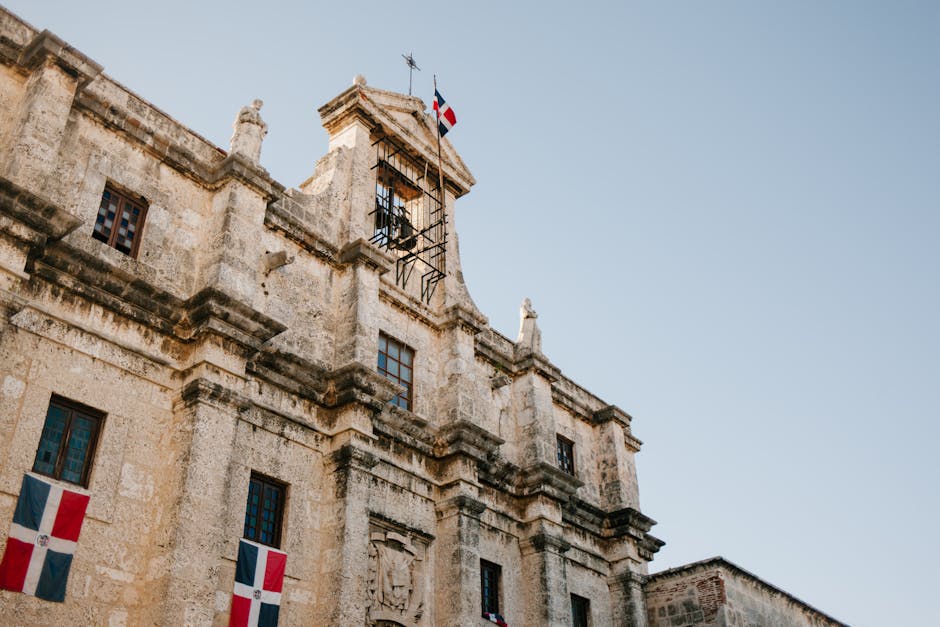In the battle of brains between The Renaissance and The Enlightenment, it’s a showdown of historical proportions. Picture it: two intellectual heavyweights duking it out in one corner, sporting fancy art and architectural marvels, and in the other, flaunting their cutting-edge philosophies and scientific breakthroughs. It’s a clash of cultures, a clash of centuries, and we’re here to break it all down for you. So grab your popcorn and your oversized thinking cap, because this is one historical throwdown you won’t want to miss.
Key Characteristics of the Renaissance Period
Let’s take a journey back in time to the Renaissance period, where the art was fine, the inventions were divine, and the fashion was on point.
During this time, artists like Leonardo da Vinci and Michelangelo flourished, producing masterpieces that still leave us in awe today. The key characteristic of the Renaissance period was the focus on humanism, where people were seen as individuals worthy of admiration and study.
Not only were artists and inventors thriving, but the fashion of the Renaissance period was also something to marvel at. Men wore doublets and hose, while women adorned themselves with lavish gowns and intricate headpieces.
Overall, the Renaissance period was a time of creativity, innovation, and beauty. It was a time when people dared to dream big and push the boundaries of what was possible. So let’s raise a glass to the Renaissance period and all the key characteristics that made it such a special time in history.
Artistic Achievements in the Renaissance vs. the Enlightenment
In the Renaissance, artists were like rockstars, but instead of adoring fans, they had Medici patrons. Their works were all about capturing emotion, beauty, and the essence of humanity. From Michelangelo’s Sistine Chapel ceiling to Leonardo da Vinci’s Mona Lisa, these artists were all about pushing boundaries and creating masterpieces that would stand the test of time.
- Techniques: Artists in the Renaissance focused on perfecting their craft, using techniques like perspective, chiaroscuro, and sfumato to create depth and realism in their works.
- Subjects: Classicism was all the rage in the Renaissance. Artists drew inspiration from ancient Greek and Roman art, showcasing idealized human forms and mythological scenes.
On the other hand, the Enlightenment was all about reason and logic. Art during this period was more about educating and enlightening the masses rather than appealing to emotion. Artists like Jacques-Louis David used their talents to promote political and philosophical ideas, creating works that were more cerebral than emotional.
- Themes: Enlightenment artists often tackled topics like science, politics, and morality in their works, using art as a tool for social commentary and intellectual debate.
- Style: Neoclassicism was the dominant style in the Enlightenment, with artists drawing inspiration from ancient Greece and Rome to create works that were symmetrical, balanced, and rational.

Philosophical Concepts: Humanism and Rationalism
Humanism and Rationalism are two fascinating philosophical concepts that have shaped the way we think about the world and our place in it. While they may seem like lofty ideas, they actually have some practical applications in our everyday lives.
Humanism:
- Focuses on the importance of human values and dignity
- Encourages critical thinking and self-reflection
- Promotes empathy and compassion towards others
- Values freedom and equality for all individuals
Rationalism:
- Relies on reason and logic to explain the world
- Emphasizes the importance of evidence-based beliefs
- Encourages skepticism and inquiry into all aspects of life
- Values the pursuit of truth and knowledge above all else
So, next time you’re pondering the mysteries of the universe or just trying to make a tough decision, remember the principles of Humanism and Rationalism. Who knows, they might just help you see things in a whole new light!

Social and Political Impact of the Renaissance and the Enlightenment
During the Renaissance and Enlightenment periods, society saw numerous changes in social and political structures that continue to impact us today. Here are some of the key ways these movements influenced the world:
- Shift in Power: The Renaissance saw a shift in power from the traditional monarchies to wealthy merchants and bankers. This shift in influence led to the rise of capitalism and the modern economy as we know it.
- Ideas of Individualism: The Enlightenment introduced the idea of individual rights and freedoms, challenging the authority of the ruling elite. This emphasis on personal autonomy laid the groundwork for modern democratic societies.
- Scientific Revolution: Both the Renaissance and Enlightenment periods saw major advancements in science and technology. The discoveries made during this time laid the foundation for modern medicine, physics, and astronomy.
Overall, the Renaissance and Enlightenment were turning points in history that shaped our modern world. From questioning traditional authority to embracing new ideas and innovation, these periods continue to influence how we think and interact in society today.

Scientific Advancements: Renaissance vs. Enlightenment
During the Renaissance, scientific advancements were fueled by curiosity and experimentation. Visionaries like Leonardo da Vinci pushed the boundaries of knowledge, dissecting cadavers and designing flying machines. It was a time of wonder and discovery, where scholars eagerly pursued the secrets of the natural world.
In contrast, the Enlightenment brought a more rational approach to science. Thinkers like Isaac Newton and Galileo Galilei emphasized empirical evidence and mathematical precision. They sought to understand the universe through observation and reason, laying the foundation for modern scientific methodology.
While the Renaissance produced groundbreaking innovations in art and literature, the Enlightenment focused on refining the scientific method and promoting intellectual progress. The two periods may have differed in their approaches to science, but both played a crucial role in shaping our understanding of the world.
Role of Religion in the Renaissance and the Enlightenment
In the Renaissance, religion played a significant role in shaping art, politics, and society. The Catholic Church, with its lavish patronage of artists and architects, was like that one friend who always insists on picking up the tab at fancy restaurants, making sure their influence was felt far and wide. Artists like Michelangelo and Leonardo da Vinci used religious themes in their work, creating masterpieces that still leave us in awe today. It’s like they were the original influencers, but with a holier twist.
During the Enlightenment, however, religion started to take a backseat as reason and science became the new cool kids on the block. Think of it as the moment when you realize your childhood imaginary friend isn’t actually real – a bit of a buzzkill, but also a necessary step towards intellectual growth. Philosophers like Voltaire and Rousseau challenged traditional religious beliefs, promoting ideas of freedom, equality, and secularism. It was like a rebellious teenager moment for society, questioning authority and forging a new path forward.
Despite the shift towards secularism, religion continued to influence politics and society during both periods. The Protestant Reformation challenged the power of the Catholic Church, leading to religious wars and conflicts that shaped the course of history. It’s like when you bring up politics at a family dinner – things are bound to get heated, but it’s also a chance to have important conversations and make meaningful changes. Religion may have taken a backseat at times, but its role in shaping the Renaissance and the Enlightenment can still be felt in the world today.
Legacy and Influence of the Renaissance and the Enlightenment
The Renaissance and the Enlightenment were like the Beyoncé and Jay-Z of their time – bold, influential, and leaving a legacy that still resonates today. Let’s break down how these cultural movements continue to shape our world:
First off, the Renaissance was all about rediscovering the classics and embracing humanism. It was like the cool kid in school who dug up ancient texts and threw epic toga parties. This era gave us iconic figures like Leonardo da Vinci, Michelangelo, and Galileo – basically the squad goals of the art and science world.
Meanwhile, the Enlightenment was like the rebellious teenager who questioned everything and challenged authority. Think of it as the ultimate mic drop moment in history. Philosophers like Voltaire, Rousseau, and Locke were dropping truth bombs left and right, paving the way for concepts like individual rights, freedom of speech, and separation of church and state.
Together, the Renaissance and the Enlightenment laid the foundation for modern society, shaping everything from politics and art to science and education. Their influence can be seen in everything from the U.S. Constitution to Beyoncé’s Lemonade album – that’s right, even Queen B is carrying on the legacy of these iconic movements.
FAQs
What were the main differences between The Renaissance and The Enlightenment?
Well, imagine The Renaissance as a rowdy party where everyone is dressed in fancy clothes and talking about art and humanism, while The Enlightenment is more like a book club meeting where people discuss reason and science while sipping tea.
Did The Renaissance and The Enlightenment have any similarities?
Definitely! Both periods were all about challenging traditional ideas and pushing boundaries. It’s like they were the rebellious teenagers of the history world.
How did The Renaissance impact art and culture compared to The Enlightenment?
The Renaissance was all about bringing back classical art and literature, creating beautiful masterpieces that celebrated the beauty of the human spirit. The Enlightenment, on the other hand, was more focused on using reason and logic to understand the world, leading to scientific discoveries and advancements in technology.
Were there any famous figures associated with both The Renaissance and The Enlightenment?
Oh, absolutely! Leonardo da Vinci was like the poster child of The Renaissance, with his incredible artwork and inventions. And then you have thinkers like Voltaire and Rousseau from The Enlightenment, who were all about spreading knowledge and questioning authority.
How did The Renaissance and The Enlightenment shape the modern world?
Well, thanks to The Renaissance, we have amazing art and literature that inspire us to this day. And The Enlightenment laid the foundation for modern science and helped pave the way for the democratic societies we live in today. So yeah, they kind of made a big impact on history.
—
In conclusion, if The Renaissance and The Enlightenment were to face off in a rap battle, who would emerge victorious?
While The Renaissance may have the flashy doublets and poetic flair, The Enlightenment brings a sharp intellect and a mic-drop logic. At the end of the day, it’s clear that both movements have their own strengths and weaknesses. It’s like comparing apples and oranges, except these fruits are wearing powdered wigs and debating the merits of classical art versus empirical evidence.
So, let’s raise a toast to The Renaissance and The Enlightenment, two historical heavyweights who continue to shape our world today. Who knows, maybe they’ll reunite for a collaboration album in the afterlife. Until then, keep on pondering the mysteries of existence and appreciating the beauty of a well-crafted sonnet. And remember, history is all fun and games until someone brings up the Dark Ages.
Stay enlightened, my friends.






